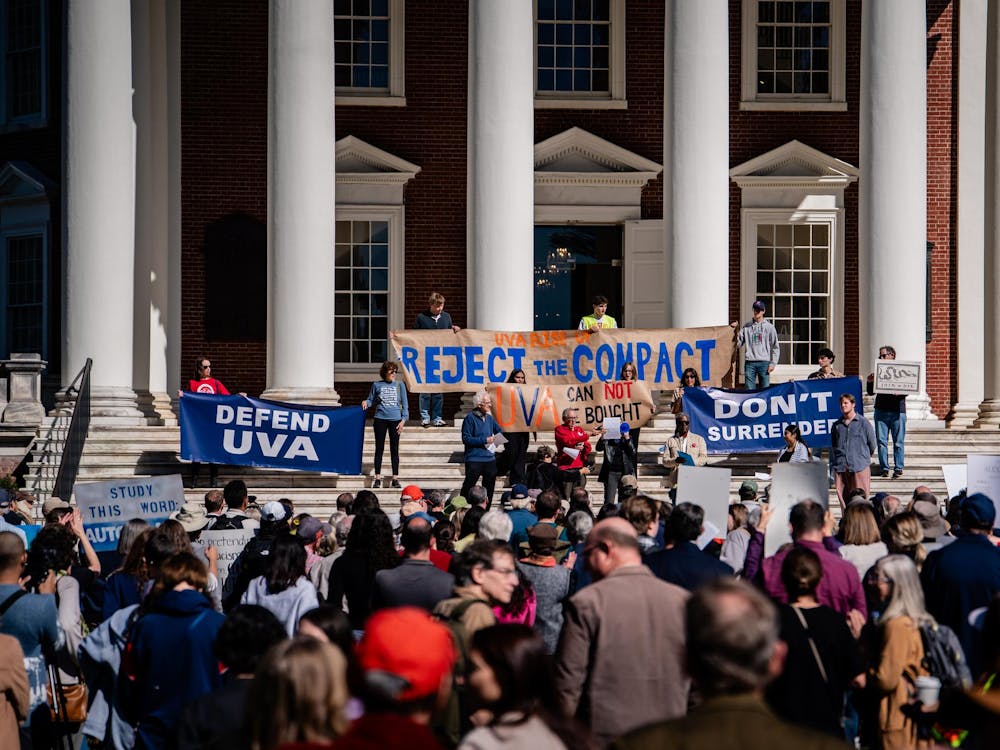THE UNIVERSITY'S Jeffersonian image took a hit this month when The New York Times reported that only eight percent of students come from families in the bottom half of the national income distribution. The Daily Progress reported that members of the Board of Visitors were shocked -- shocked! -- to learn that our public university has become a bastion of privilege. But this news should come as no surprise to even the most oblivious of our leaders. The University has a smaller percentage of low-income students than any flagship university in the nation, and one merely has to observe the iPod-toting masses on Grounds to realize that our student body has money.
The University has finally started to address the problem, but more must be done in both recruitment efforts and the admissions process. In the latest round of admissions, the admissions office aggressively publicized the Access U.Va. financial aid program and encouraged low-income students to apply. There was much rejoicing when the upcoming freshman class was unveiled, with 6.2 percent of students coming from low-income families, up from less than 5 percent last year. These numbers reflect welcome improvements, but 6.2 percent is not cause for celebration at a University that was founded in the name of public education.
If the University is to make true progress, low-income students must be admitted at a significantly higher rate than the privileged applicants who flood the admissions office each year. This year, for the first time, the admissions office used information from the financial aid office to identify students who were likely to qualify. In an interview, Admissions Dean John Blackburn said that the change is not a new policy, but rather an expansion of efforts to consider opportunity along with achievement. Low-income status is considered a "plus factor" that improves an applicant's chances of admission, but even with this heightened consciousness, the rate of admission for low-income students has increased only three percent, up from 38 percent to 41 percent in 2005. African-American applicants were admitted at a rate of 59 percent under race-sensitive admissions, while legacy students, who essentially receive affirmative action for privilege, were admitted at a rate of 52 percent.
Socioeconomic affirmative action is necessary not only to achieve greater diversity, but also to compensate for the tremendous disadvantage that low-income students face in preparation for college. The new version of the SAT could add to this disadvantage since the new writing portion reflects skills that have been taught, rather than natural ability.
While he acknowledges that SAT scores are "helpful" to the admissions office, Blackburn is adamant that the SAT is only a small factor on an application that considers essays, academics, teacher recommendations and extracurricular involvement. In an applicant pool of over 15,000 students, the fact that SAT scores are considered at all will disadvantage low-income students to whatever degree that they are a factor.
One of the greatest barriers to increasing the admission of low-income students is that even under need-conscious admissions, application readers frequently lack information about a student's financial status. Many low income applicants only apply for financial aid after they have been accepted, and while application readers can sometimes infer financial status based on a student's location, the lack of specific knowledge is a huge obstacle to achieving socioeconomic diversity.
Blackburn said that he is working with the financial aid office on possible methods of early identification, including working with the College Board, the administrators of the SAT, to increase the number of students who are identified as low income before the admissions process. These efforts are crucial to the success of need-conscious admissions, and the University should not fear a radical departure from tradition, such as requiring some evidence of financial status to be submitted with every application. At the very least, the University should make clear to low-income prospective students that filing out financial aid forms early in the process can only improve their chances of admission.
The University's highly subjective admissions process has the advantage of looking beyond numbers, but it also leaves little room for accountability. We are expected to simply trust that readers have been fair, and while we have no reason to doubt that this is the case, we also have no way of knowing whether low income students have benefited or suffered. All we can do is look at the results.
The outcome of this year's admissions reflect significant progress, but to congratulate ourselves for these numbers is to accept the vast gap in opportunity as an inevitable reality. Access to higher education will never be equal, but the staggering overrepresentation of the wealthy should be unacceptable to all who believe in public education.
Cari Lynn Hennessy is a Cavalier Daily columnist. She can be reached at chennessy@cavalierdaily.com.






